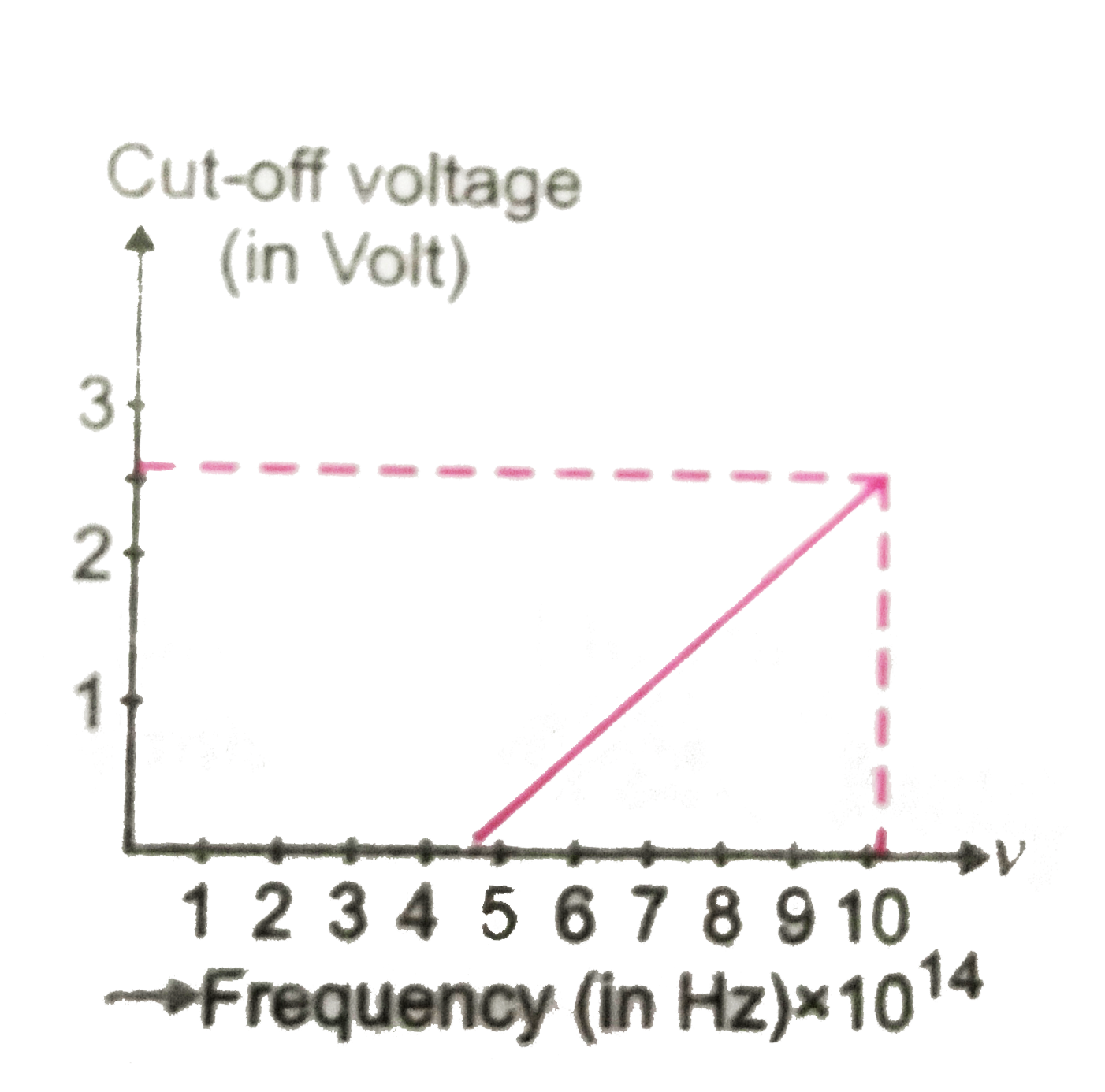In an experiment on photoelectric effect, the slope of the cut off voltage versus frequency of incident light is found to be . Given , estimate the value of Planck's constant.
Step by step video & image solution for In an experiment on photoelectric effect, the slope of the cut off voltage versus frequency of incident light is found to be 4.12xx10^(-15)Vs. Given e=1.6xx10^(-19)C, estimate the value of Planck's constant. by Physics experts to help you in doubts & scoring excellent marks in Class 12 exams.
Updated on:21/07/2023Topper's Solved these Questions
- ELECTRONS AND PHOTONSBOOK - SL ARORACHAPTER - ELECTRONS AND PHOTONSEXERCISE - Problem Solution
19 Videos
- ELECTRONS AND PHOTONSBOOK - SL ARORACHAPTER - ELECTRONS AND PHOTONSEXERCISE - TYPE A : Problem For Self Practice
21 Videos
- ELECTROMAGNETIC WAVESBOOK - SL ARORACHAPTER - ELECTROMAGNETIC WAVESEXERCISE - Problem for self-practice
21 Videos
- ELECTROSTATIC FORCES, CHARGES AND FIELDSBOOK - SL ARORACHAPTER - ELECTROSTATIC FORCES, CHARGES AND FIELDSEXERCISE - Problems For Self Practice
1 Videos
Similar Questions
In an experiment on photoelectric effect, the slope of the cut-offf voltage versus frequency of incident light is found to be 4.12×10−15V s. calculate the value of Planck's constant.
View SolutionIn a photoelectric experiment, it was found that the stopping potential decreases from 1.85 V to 0.82 V as the wavelength of the incident light is varied from 300nm to 400nm. Calculate the value of the Planck constant from these data.
View Solution
Knowledge Check
In an experiment on the photoelectric effect , the slope of the cut - off voltage versus frequency of incident light is found to be 4.12×10−15V s . The value of Planck's constant is
A6.592×10−34 J sB6.592×10−31 J sC9.592×10−34 J sD6.592×10−30 J sPhotons of frequencies 2.2×1015Hz and 4.6×1015Hz are incident on a metal surface. The corresponding stopping potentials were found to be 6.6V and 16.5V respectively. Given e=1.6×10−19c, the value of universal planck's constant is
A6.6×10−34JsB6.7×10−34JsC6.5×10−34JsD6.8×10−34JsIn a photoelectric experiment it was found that the stopping potential decreases from 1.85 V to 0.82 V as the wavelength of the incident light is varied from 300 nm to 400 nm. Calculate the value of the Planck constant from these data.
A4.12×10−15 eVsB2.5×1010eVsC5.2×10−15 eVsD7.5×10−8 eVs
Calculate the speed of the electron in the first Bohr orbit given that h=6.6×10−34Js,m=9.11×10−31kg and e=1.603×10−19C.
View SolutionFor photoelectric effect in sodium, fig. shows the plot of cut-off voltage versus frequency of the incident radiation. Caclculate:

(i) the threshold frequency
(ii) the work function for sodium. (Use h=6.6×10−34Js)
View SolutionIn an experiment to measure the charge on an electron, the following values of charge were found on oil droplets: −1.6×10−15,−2.4×10−19,−4.0×10−19 (in coulomb). What values of electronic charge would be indicated by these results?
View SolutionBy how which would the stopping potential for a given photosensitive surface go up if the frequency of the incident radiations were to be increased from 4×1015Hz to 8×1015Hz? Given, h=6.6×10−34Js, e=1.6×10−19Candc=3×108ms−1.
View SolutionElectrons ejected from the surface of a metal, when light of certain frequency is incident on it, are stopped fully by a retarding potential of 3 volts. Photo electric effect in this metallic surface begains at a frequency 6×1014s−1. The frequency of the incident light in s−1 is [h=6x10−34J−sec, charge on the electron =1.6×10−19C]
View Solution
